
GEAR PRODUCTION &
GEAR MANUFACTURING TURKEY



Our company’s and the production facilities in Turkey have been operating in perfect sync and communication for many decades, every production project that starts in OGGO Tech, is we take care of with the highest scrutiny in order to create the perfect operation system for our engineering capabilities. Gears, are one of the main expertise for our people of OGGO Tech here in Turkey. Gear manufacturing in Turkey is an area of our expertise, and as technology advances, and our company takes part in the progress of our country, our international team, as well as our Turkish engineers and Turkish operators do their best to reach the current state of most progressed manufacturing methods. We like to stay updated and informed, and this is one of the ways how OGGO Tech keeps shining among Turkish manufacturing companies.
Spur Gear
Helical Gear
Double Helical Gear
Herringbone Gear
Worm Gear
PTO Gear
Pinion Gear
Sprocket Gear
Bevel Gear
Ground Gear
Paper Industry
Cement Industry
Sugar Industry
Steel Industry
Transmission Components
Gearbox Manufacturing
Automotive Industry
General Machinery
Machine Manufacturing
Composite Industry
Let’s take a deeper look into the types of gears from all over the industries. Every type of gear has in fact a long history and methodical progression of needs in the engineering areas of numerous industries. Here in Turkey, and as OGGO Tech, we approach engineering in its essential forms, and consequently having further improvements in gear production methods. Manufacturing gears, is one of the most detailed operations in milling processes; especially with CNC Milling, CNC Turning, Gear Hobbing, as well as Manual Milling and Manual Turning processes.
We, as OGGO Tech, take pride in being one of the forward-thinkers of the industry of gear manufacturing in Turkey. When a project is on our desks, our engineers and operators make the most detailed outlines and provide us perfectly customized gear manufacturing methods. This is why, we can afford to success in gear production as a Turkish production company, in the industries such as aviation, defense, automotive, automation and more.

Spur gears use shafts that are parallel to transmit power. The gears' teeth are parallel to the shaft axis. These spur gears produce radial reaction loads on the shaft but not axial loads as a result of this. Because spur gears have just one line of contact between teeth, they are louder than helical gears. This is why spur gears are most known gears, and our gear production company in Turkey manufactures great numbers of gears. While rolling through the mesh, the teeth slide off of one tooth and accelerate to the next. Helical gears, on the other hand, have several teeth in contact and transmit torque more smoothly.

Positive displacement pumps, such as gear pumps, pump a constant volume of fluid with each rotation. They can pump viscous, polymers, gasoline and lubrication oils, resins, and caustic fluids such as PVC. In Turkey gear manufacturing, we produce pump gears too. Because gears are the core of a positive displacement pump, partnering with us ensure that your gears are of the finest quality.
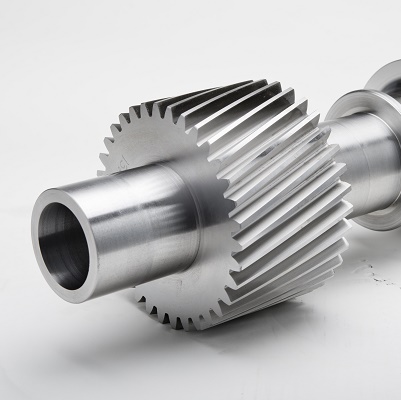
In contrast to spur gears, which have teeth that are parallel to the shaft, helical gears feature teeth that are placed at an angle to the shaft. Helical gears may carry higher load than spur gears since more than one tooth is in contact during operation. Normally, Helical gears are also smoother and quieter to function than spur gears because of the load sharing between teeth. And to understand how Helical gears generate thrust during operation, which must be taken into account when they are used. Also in Turkey too, the Helical gears are used in the majority of Turkish gearbox manufacturers and enclosed gear drives.
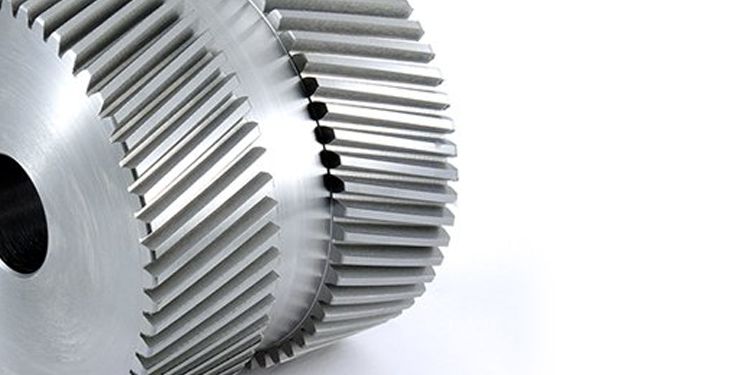
Double helical gears are a type of helical gear that has two helical faces next to each other with a gap between them. The helix angles on each face are identical but opposing. The use of a twin helical gear set lowers thrust loads and allows for even more tooth overlap and smoother operation. As the same with gearboxes in Turkish manufactured gears, enclosed gear drives frequently use double helical gears, just as helical gears.

Herringbone gears are comparable to double helical gears, but without the gap between the two helical faces. How Herringbone gears are often smaller than double helical gears, making them appropriate for high-shock, high-vibration applications. In our company, as Turkish gear manufacturer, this type of Herringbone gearing is utilized due to its challenging production.

The most common application of bevel gears is to transmit power between shafts that intersect at a 90-degree angle. They're employed in situations that demand a right-angle gear drive. Bevel gears are more expensive and can't transmit as much torque per unit of size as a parallel shaft configuration.
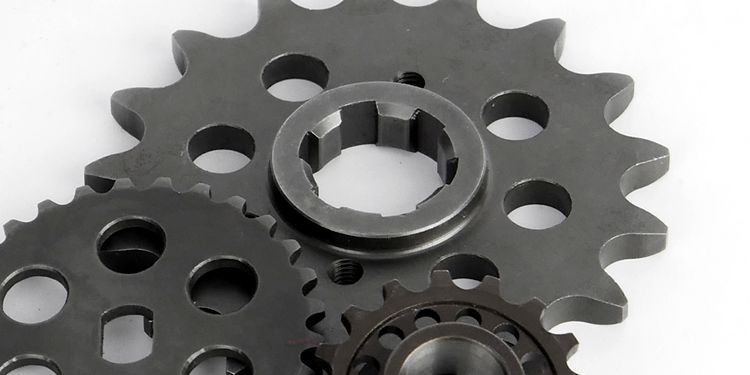
A chain or belt connects two sprockets, one of which is the 'driver' and the other is the 'driven.' The mechanical system is then driven by motion or force, which transmits power or alters the torque or speed. Turkey gear manufacturing methods are improved to our capacity. Sprockets with more teeth can transfer more weight, but they also cause more friction, which slows down the operation. The notches on a chain wear away as it passes over them, so if they've gotten sharpened or hooked at the point rather than being blunt, they need to be replaced.
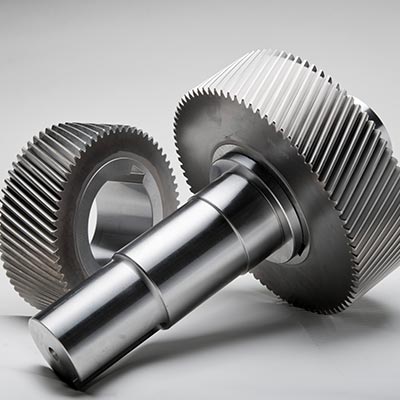
Precision ground gears fulfill the highest quality and functionality standards. Our ground spur and helical gears are always produced to order and can be found in a wide range of applications. Automotive, industrial equipment, machinery, compressors, blowers, pumps, superchargers, and other markets are all served.
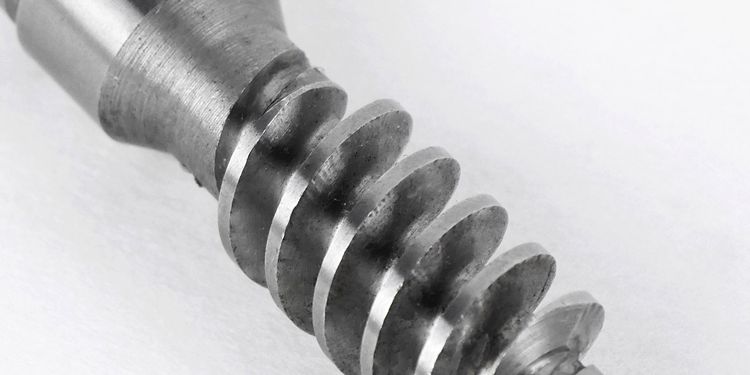
Worm gears transmit power through non-intersecting shafts at right angles. Also called the endless screw, worm gears provide thrust and are suitable for severe shock load applications, although they have a low efficiency compared to other gears. They are frequently utilized in lower horsepower applications due to their low efficiency.

PTOs (power take-offs) are mechanical gearboxes that attach to apertures on truck transmissions and are used to transfer engine power to auxiliary components, most commonly a hydraulic pump. The pump's hydraulic flow is then channeled to cylinders and/or hydraulic motors to accomplish work - think dump trucks, garbage trucks, and wreckers. Some PTO applications, such as pneumatic blowers, vacuum pumps, and liquid transfer pumps, deliver power directly to the driven component through a rotating shaft.

Hypoid gears resemble spiral bevel gears in appearance, but they function on shafts that do not cross, unlike spiral bevel gears. Production of gears and transmission in Turkey is our main field. Because the pinion is situated on a different plane than the gear in the hypoid arrangement, the shafts are supported by bearings on both ends of the shaft.
Spur gears, being one of the most widespread type of gears, also manufactured here in Turkey, are used in bulk handling equipment, energy industry, transmission units, forestry, automotive, food and beverages industries. And general machinery manufacturing in Turkey is well progressed, this is why our Turkish gear manufacturing company excels in the production of spur gears. The application include components in automotive sector, in planet gears, agricultural machinery, packaging machinery, conveyors and many more.
In Turkey the industry for helical gears are endless, as the manufacturing and production in Turkey progress, the need of parts also increase. These industries include material handling, energy, marine and shipbuilding, mining, food and beverages, cement industry, chemical processing industry, forestry and more. Applications include parts of aggregate crushers, water and sewage treatment processes, pumps, conveyors and mixers.
Double helical gears are more complex parts used in a limited number of industries. Turkey, being one of the newer powerhouses in manufacturing across the world leading manufacturers, also take part in Turkish gear manufacturing methods in heavy industries, marine and shipbuilding, surface and underground mining machineries and equipment. These include the turbines, propeller parts and milling applications.
Herringbone Gears are very similar to double helical gears, the main difference is that in double helical gears there is a gap in between the two gears and with Herringbone gears there is none, rendering a complete mirrored gear shape. Gear production in Turkey of this type It requires more care and design than others, and our expert engineers manage the gear manufacturing methods very well. The industries and applications of herringbone is almost identical that of double helical gears.
Worm gears are also can be found in virtually any machinery across the world. In Turkey, we improved our ways to process these types of gears and implement the best operational actions possible to achieve the best gear manufacturing. They are used in similar to spur gears and applications include conveyors, bulk handling, packaging, agriculture etc.
Gears are toothed mechanical transmission elements that transport motion and power between machine components, and we’ll go over the many types of gears and how they work in this article. Similarly, gears mesh their teeth with the teeth of another corresponding gear or toothed component when they operate in matched pairs, preventing slippage during the transmission process. Because each gear or toothed component is connected to a machine shaft or base component, when the driving gear (i.e., the gear that provides the initial rotational input) rotates or translates its shaft component, the driven gear (i.e., the gear or toothed component that is impacted by the driving gear and exhibits the final output) rotates or translates its shaft component.
The transmission of motion between the driving shaft and the driven shaft might result in a change of rotation or movement direction, depending on the design and construction of the gear pair. Furthermore, if the gears aren’t the same size, the machine or system gains a mechanical advantage, allowing for changes in output speed and torque (i.e., the force which causes an object to rotate).
Gears and their mechanical properties are widely used in industry to transmit motion and power in mechanical devices like as clocks, instrumentation, and equipment, as well as to reduce or increase speed and torque in motorized devices such as automobiles, motorcycles, and machines. Other design features, including as gear form, tooth construction and design, and gear pair arrangement, aid in classifying and categorizing the numerous types of gears available. Each of these gears has its own set of characteristics and benefits, but the requirements and specifications of a specific motion or power transmission application determine which gear is best for the job.
This article is about gears, and it explores the numerous varieties available as well as their roles and mechanisms. The page also discusses the factors to consider while purchasing each type of gear, as well as popular uses.
We carry out our gear manufacture without any issues as a professional CNC milling and manufacturing firm. Through our high-quality business, we are the first to choose our gear sets. The selected applications in tool and gear production are determined by the part, manufacturing time periods, and eventually their dimensions. Gear manufacturing is generally done in soft step procedures, where exact dimensional tolerances are likely to be difficult to achieve. To establish a problem-free hardening lathe, careful preparation for a hardened stage in gear production is essential. Hard operations in gears are easier to undertake at this level. Furthermore, we create custom projects for you. We manufacture in accordance with the information provided by our engineers.
As a professional gear gear manufacturing company, we recognize that our service quality standards are higher than gear production and sales companies in Turkey. After machining, we classify our professional gears into numerous categories based on general standard levels. We typically use the DIN3962 standard in our high-quality cylindrical gear manufacturing. In addition, we manufacture gears to various standards in order to meet the needs of our customers. These standards, on the other hand, can be used at a similar level to our DIN3962 standard. Our gear production quality standards are normally defined by our professional personnel in accordance with the part requirements. In addition, based on the application sectors, we can realize our gear production.
Gears come in a wide range of designs, materials, and configurations to fit a wide range of industries and applications. These qualities enable gears to be classed and categorized in a variety of ways, including:
The majority of gears are circular—that is, the gear teeth are placed around a cylindrical gear body with a round face—but there are some non-circular gears. The faces of these gears can be circular, triangular, or square in shape.
The gear ratios (i.e., the ratio of the output to the input) specified in circular gear devices and systems are consistent, both for rotary speed and torque. The term “consistency of gear ratio” refers to the equipment or system consistently producing the same output speed and torque when given the same input (either speed or torque).
Devices and systems that use non-circular gears, on the other hand, have changeable speed and the ratios of the torque. Non-circular gears with variable speed and torque can meet unusual or irregular motion needs such alternatingly increasing and reducing speed of the output, multi-speed, and reverse motion. Linear gears, including gear racks, can also convert the driving gear’s rotating motion into the driven gear’s translational motion (or a blend of both translational and rotational motion).
Cogs are also used to refer to gear teeth, which is why a gear is often referred to as a cogwheel. While gears were classified in the preceding part based on the general shape of the gear body, this section discusses the design and construction of their teeth (i.e., cogs). Gear teeth are available in a variety of design and construction variations.
Gear teeth either are cut right into the gear blank and placed as separate, formed parts into the gear blank, based on the gear construction. When a gear becomes fatigued in most situations, it can be completely replaced. However, using gears with distinct tooth components has the advantage of allowing you to replace individual teeth as they wear out rather than having to replace the entire gear component. Individual cogs are less expensive than a complete gear, hence this feature may help to minimise the cost of gear replacements over time. It also enables for the retention and preservation of unique, custom, or otherwise difficult-to-find gear bodies.
The arrangement of the axes—along whereby the gear shafts lie and upon which the gears rotate—in respect to each other is referred to as a gear’s axes configuration. Gears use three different axis configurations:
There are various other alternatives that industry expert or purchasing agent may take into account and selecting gear for their specific application, in addition to the design qualities stated above. Other factors to consider are the building material, surface treatments, number of teeth, tooth angle, and lubricant kind and procedure.
First contact with OGGO Tech will be a throughout communication to reach the perfect processes. Our expert designers and engineers will provide the assistance and details.
A confirmed project will enter our manufacturing lines, supervised by the production managers and under constant improvement.
After the project is finished and delivered, our assessment team will rapport a total, top-down and bottom-up process, so that we know we are happy.